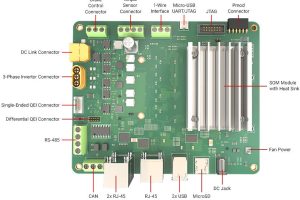Mouser delves into a multitude of topics, trends, solutions, and products to give engineers the necessary information and equipment to evolve the realm of wearable technology further.
With an increasing number of companies and individuals incorporating wearables into their daily lives, it is crucial to stay updated on the latest developments in this field.
Mouser offers insightful articles, such as what Weird, Wacky, Wearables are emerging on the market to change the way we live – granting engineers knowledge about what’s new and how they can create their own applications through an expansive catalog of products, eBooks, articles, and blogs.

As technology advances, the various points of information we can gather, such as vital signs through printable sensors, become more accurate and serviceable – bolstering a new era of wearable tech.
Mouser’s hub aims to provide everything engineers will need to design for devices that can support applications, including the convenience of tracking fitness and sleeping patterns to more crucial applications such as monitoring health in critical patients.
For wearable solutions, Mouser stocks a wide selection of semiconductors and electronic components, including the following examples:
- The MAX8614x pulse oximeter and heart-rate sensors from Analog Devices, Inc. (ADI) are ideal for a wide variety of optical-sensing applications, such as pulse oximetry and heart rate detection. They feature optimized architecture for transmissive and reflective heart rate, as well as ultra-low-power operation for body wearable devices.
- The AS7058 integrated analog front end by ams OSRAM is a multi-vital sign monitoring device that provides complete photoplethysmogram, electrocardiogram, body impedance, and electrodermal activity. With multiple activity monitoring systems included, the sensor can measure body composition and the skin’s water content for applications from fitness bands to medical patches.
- The ENS161 digital metal-oxide multi-gas sensor from ScioSenseis based on metal oxide (MOX) technology with four sensor elements. The ENS161 multi-gas sensor enables wearables to perform continuous air quality monitoring. The sensor is designed with a low-power operating mode, reducing power consumption down to 700 μA in a 3 mm × 3 mm × 0.9 mm LGA package.
- The QM45500 Wi-Fi® 7 front-end module from Qorvo offers integrated matching technology and layout efficiency for various applications. The module is optimized for a broad 3 V to 5 V operating range, making it ideal for enabling wireless connectivity in wearable devices.
You can visit the resource here.
See also: Qualcomm and Google to develop RISC-V for wearable devices
 Electronics Weekly Electronics Design & Components Tech News
Electronics Weekly Electronics Design & Components Tech News



